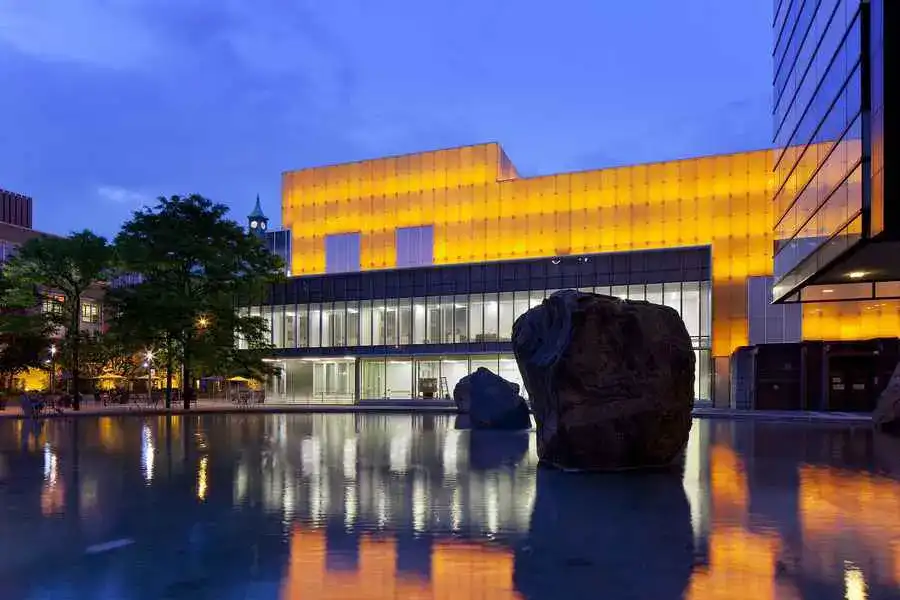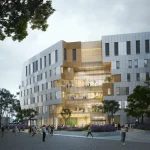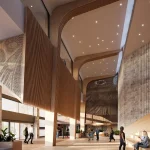Ryerson Image Centre Toronto, RIC, University building Ontario architect
Ryerson Image Centre Toronto : RIC Building
Ryerson University Building, Canada design by Diamond Schmitt Architects
Design: Diamond Schmitt Architects
The Black Star Collection Ryerson University
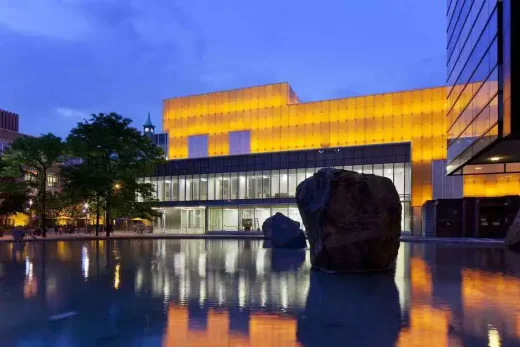
photo © Tom Arban Photography Inc.
27 Sep 2012
Ryerson Image Centre
Ryerson University is the home of the famous Black Star Collection of approximately 292,000 black and white photojournalistic photographs that represent the personalities, events and conflicts of the 20th century. The Collection features images of historical subjects including the Great Wars, European history, the American Civil Rights movement, as well as major international political and cultural figures, popular culture, and early space exploration.
Assembled over a period of eighty years at the Black Star photo agency in New York City, the photographs in the Black Star Collection span from c. 1910 to1992, with the majority of the photographs taken during the golden age of photojournalism, from the late ’30s into the ’70s. The black and white photographs in the Collection were created by more than 6,000 different image-makers, many of whom helped to define picture journalism. Working collaboratively in New York City with the founders and editors of weekly magazines, including Life, Look and the Saturday Evening Post, these photographers established the norms of the published photo-essay.
The New York-based Black Star Agency was started in 1935 by three Jewish intellectuals when they were exiled from Germany. Ernest Mayer, who was the owner of the Berlin-based Mauritius photo agency, transported some 5,000 images from his agency to New York. Together with fellow émigrés Kurt Safranski, a literary editor, and Kurt Kornfeld, a literary agent, they founded The Black Star Agency and established it in New York City’s Graybar Building near Grand Central Station. The Black Star Agency represented photographers who documented significant people and events around the world in news photos and photo essays, for such clients as Life magazine, Look, the Saturday Evening Post, Colliers, Ladies Home Journal, Redbook, McCall’s, Cosmopolitan, the New York Times, Time magazine, Newsweek, and many other major publications. A shortlist of the agency’s photographers includes Robert Capa, Henri Cartier-Bresson, Andreas Feininger, Germaine Krull, Philippe Halsmann, Martin Munkacsi, W. Eugene Smith, Marion Post-Wolcott, Bill Brandt, and Mario Giancomelli. Ben and Howard Chapnik worked at the Black Star Agency with Mayer, Safranski and Kornfeld before taking it over in 1963. The Black Star Agency continues to exist in New York, under the presidency of Ben Chapnik.
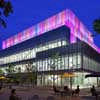
photo © Tom Arban Photography Inc.
The Collection is particularly well-known for its coverage in:
• European and American life before the Second World War
• The Second World War, Spanish Civil War, and Japanese invasion of China
• Post-war life in Europe and The United States of America
• The Civil Rights era, for which the Collection in particularly distinguished
• The Vietnam War, including the French phase
• 20th Century political figures
• American presidents
• Popular culture: trends, lifestyles, and headline events
• Personalities in sports, entertainment, and cultural fields
• Fashion photographs
• Scientific advancement in diverse fields, particularly space exploration
The Black Star Collection is the largest gift of cultural property ever made to a Canadian university. In 2005, the Black Star Collection was gifted to Ryerson University, along with $7 million for its preservation, study and exhibition, by an anonymous donor. In receiving this gift, the university has been entrusted with preserving these photographs and making them accessible to the public through exhibition and publication.
In addition to the Black Star Collection, the Ryerson Image Centre’s collection includes fine art photography and a growing number of artist archives, including those of Wendy Snyder MacNeil, Jo Spence and Werner Wolff.
Ryerson Image Centre Lighting Feature
The Ryerson Image Centre’s energy-efficient LED lighting system is encased in a double-facade glass treatment that floats off the original School of Visual Arts structure above the third floor. The existing brick surface received new insulation and a smooth stucco finish to create a monolithic surface to act as a projection screen for the new lighting system. This core layer of envelope was then shrouded by a second skin of translucent structural glass suspended one to five inches away by stainless steel point fittings on an aluminum framework hung from the existing building’s primary structure.
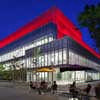
photo © Tom Arban Photography Inc.
The resulting void becomes the instrument for the lighting treatment: using asymmetrical optics, the re-surfaced rear walls are illuminated by fixtures within the cavity with a carefully calibrated light spread acting to create a diffuse glow that is then further diffused by the translucent glass skin. The result is that each illuminated glass panel partially spills into the voids of its neighbouring glass panels to create a softened pixelization of the entire facade. This subtle merging of adjacent coloured lights creates a soft, almost impressionist effect that contrasts the crispness of the glass skin.
Essential to the project’s success were the numerous on-site mock-ups that helped demonstrate to the client the effect and potency of the LED glazing system prior to construction, as well as refining the actual installation’s design parameters. The lighting system was developed with GVA Lighting Inc. and Crossey Engineering Ltd. is the electrical and lighting engineer.
To ensure the surface projects a solid and calming demeanor, the luminaires and their associated wiring and supports were rendered invisible from the street during both day and night. Translucent gaskets were used to seal the joints between glass panels and the LED drivers were remotely located inside the building. A white dot frit gradient pattern subtly fades in and out that blends the slab edges into the vision glazing to help unify the curtain wall. A solar shading control was embedded within the glass units to ensure a uniform, monolithic daytime appearance from the exterior.
Special care was also taken to avoid shadows being cast onto the glass at night by the internal lighting system. This was achieved by installing power and data cabling discretely within the supporting framing, through careful alignment of the luminaires with the glass joints and support brackets, and by locating a supporting structure with a soft curving profile. The highly detailed glass panels themselves are composed of two low-iron glass layers sandwiching a translucent white PVC obscuring layer.
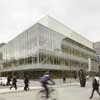
photo © Tom Arban Photography Inc.
The result is that the panels have an even, unfettered glow that allows the facade to function as a monolithic canvas for the programmed lighting routines, with 16.7 million possible colour combinations. An app designed by Doug Bouchard, Assistant Professor at Ryerson University’s New Media program, allows individuals to program the wall in colour and patterns. Using the app, a selected colour and a line or squiggle drawn on the touch screen of a smart phone will be recreated on the exterior of the building. When more than one person is using the app at a time, colours and patterns will be blended and mimic the effect of painting.
To view a demonstration of the light installation, please see: www.dsai.ca/videos-podcasts/ryerson-image-centre or Ryerson Image Centre LED exterior.MOV on YouTube
To view a demonstration of the interactive feature, please see: www.youtube.com/watch?v=uxzHlbayWbA
Ryerson Image Centre : main page on the RIC building in Toronto
Diamond and Schmitt Architects
Ryerson Image Centre Building images / information from Diamond Schmitt Architects
Location: Ryerson University, Toronto, Ontario, Canada
Toronto Architecture
Toronto Architecture Developments – chronological list
Another Ryerson University building in Toronto on e-architect:
Ryerson Student Learning Centre
Design: Snøhetta / Zeidler Partnership Architects
Ryerson Student Learning Centre
Ryerson Student Learning Centre architects : Snøhetta
Toronto Architecture Walking Tours
Toronto Buildings
Trafalgar Park Community Centre, Oakville, Ontario
Design: Diamond Schmitt Architects
Trafalgar Park Community Centre Building
Bianca Condos, 420 Dupont St
Design: Teeple Architects
Bianca Condos Toronto
Comments / photos for the Ryerson Image Centre Toronto – RIC Building page welcome.

